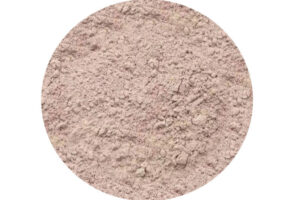Can You Reuse Casting Sand? The Pros and Cons of Recycling Foundry Sand
 Casting sand is an essential component in the sand casting industry. It is used to create molds for casting metal parts and components. However, the process of casting metal parts generates a significant amount of waste in the form of used sand. This waste sand is known as foundry sand, and it is typically disposed of in landfills. But, can you reuse casting sand? In this post, we will explore the pros and cons of recycling foundry sand.
Casting sand is an essential component in the sand casting industry. It is used to create molds for casting metal parts and components. However, the process of casting metal parts generates a significant amount of waste in the form of used sand. This waste sand is known as foundry sand, and it is typically disposed of in landfills. But, can you reuse casting sand? In this post, we will explore the pros and cons of recycling foundry sand.
What is Foundry Sand?
Foundry sand is a high-quality silica sand that is used to create molds for casting metal parts. It is a byproduct of the metal casting process and is typically composed of a mixture of sand, clay, and water. Foundry sand is an essential component in the foundry industry, and it is used to create molds for casting a wide range of metal parts and components.
The Pros of Recycling Foundry Sand
1. Environmental Benefits
Recycling foundry sand can have significant environmental benefits. By reusing this waste material, we can reduce the amount of waste that is sent to landfills. This, in turn, can help to reduce greenhouse gas emissions and conserve natural resources.
2. Cost Savings
Recycling foundry sand can also result in cost savings for foundries. By reusing this waste material, foundries can reduce their disposal costs and potentially save money on raw materials.
3. Improved Quality
Recycling foundry sand can also result in improved quality. By reusing this waste material, foundries can ensure that the sand they are using is of a consistent quality, which can help to improve the quality of the castings they produce.
The Cons of Recycling Foundry Sand
1. Contamination
One of the main concerns with recycling foundry sand is contamination. Foundry sand can contain a variety of contaminants, including heavy metals, organic compounds, and other pollutants. If these contaminants are not properly removed, they can pose a risk to human health and the environment.
2. Reduced Performance
Recycling foundry sand can also result in reduced performance. As the sand is reused, it can become worn and lose its ability to create high-quality molds. This can result in lower-quality castings and potentially higher rejection rates.
3. Limited Reuse
Finally, there is a limit to how many times foundry sand can be reused. Eventually, the sand will become too worn and contaminated to be used again, and it will need to be disposed of.
Conclusion
In conclusion, can you reuse casting sand? The answer is yes, but there are both pros and cons to recycling foundry sand. While recycling foundry sand can have significant environmental benefits and cost savings, it can also result in contamination, reduced performance, and limited reuse. Ultimately, the decision to recycle foundry sand will depend on a variety of factors, including the quality of the sand, the level of contamination, and the cost of disposal.






